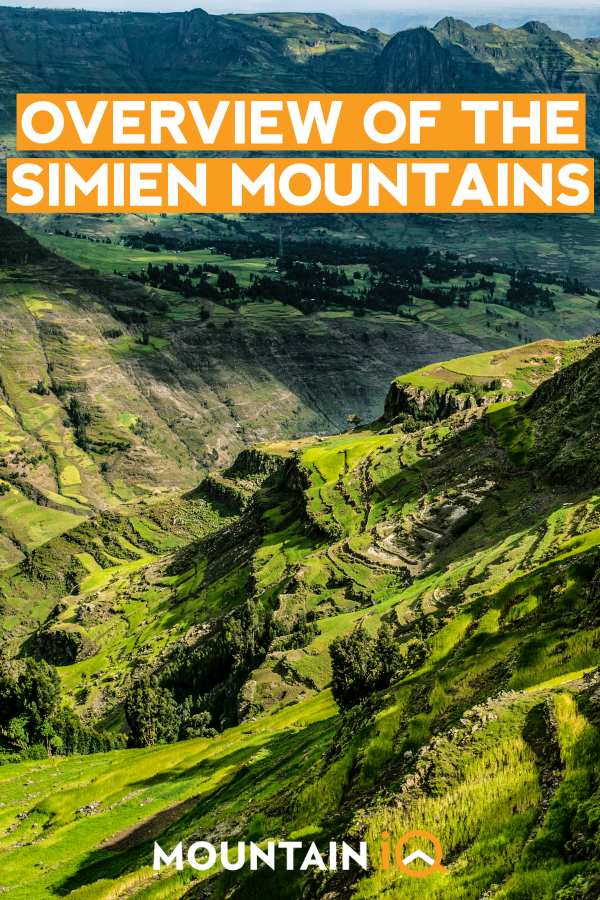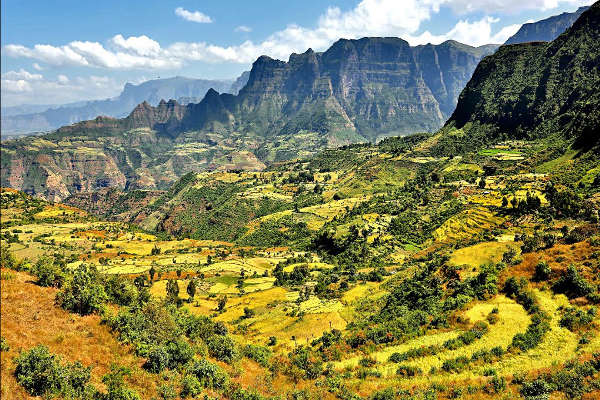The Simien, or Semien, Mountains are located in Africa, northern Ethiopia and form part of the Ethiopian Highlands.
The Simien Mountains
Length: 60km
Country: Ethiopia
Physical Geography
Geology
The Simien Mountain Range has an interesting geological origin and is almost unique, with only one other range (the Drakensberg) in the world being formed the same way.
The mountains were formed millions of years ago and were shaped by volcanic eruptions, uplift and erosion.
The Simien Mountains have a distinctive appearance consisting of high plateaus rising into pinnacles that are divided by deep valleys.
The formation of the Simien Mountains preceded the creation of the Rift Valley and were a result of multiple lava outpourings creating layers of thick basalt.
A big portion of the mountain range is a remnant of a shield volcano.
The uplift of the entire mountain formation, coupled with the volcanic activity, resulted in the dramatic escarpment of the Simien Mountains.
Years of erosion have also contributed to the way the mountain range looks today.
Topography
The Simien Mountains are situated in the Ethiopian Highlands in northern Ethiopia.
The range has very rugged topography as years and years of erosion has shaped the mountains into jagged peaks, sharp precipices and deep valleys.
Due to its location on the northern section of the central plateau, the Simien Mountains divide the area into two distinctive regions: the highlands and the lowlands of the Tekeze River.
This results in a very dramatic landscape which offers many unique viewpoints for hikers.
Climate
The climate of the Simien Mountains is generally quite cold due to its high altitude. The main dry season is from December through to March, which consists of cool daytime temperatures and clear skies.
However, temperatures vary greatly between the days and nights so it can drop below freezing when the sun goes down. December and January are the coldest months of the year.
The Simien Mountains experience a wet summer season from June to September. These months consist of slightly warmer days with a good chance of rain that usually occurs in quick downpours.
Temperatures do not vary significantly throughout the seasons, although the higher the altitude in the mountains, the colder it is. Temperatures do not usually exceed 59˚F (15˚C) during the day.
Wildlife and Plants
Because of its location, altitude and remoteness, the Simien Mountains are home to a diverse array of rare and endemic plant species.
There are three main zones of vegetation within the range: Montane forest, Ericaceous belt and the Afroalpine zone.
The Montane forest zone lies within 1,900 and 3,000 meters on the mountain slopes. This forest area is an important zone for conservation as much of it has been destroyed through clearing, settlements and grazing.
The Ericaceous belt, or Sub-Afroalpine zone, is found mostly on the steep escarpments of the mountains between 2,700 and 3,700 meters. Various species of Erica can be found within this zone in both tree and shrub forms.
Locals often use these plants for building purposes and fuel-wood, but unsustainable harvesting and slow plant growth has put the Erica at risk. Thus, it has become a high priority species for conservation.
The Afroalpine zone sits between 3,700 and 4,533 meters and mostly consists of various grasses. The locals of the area generally use these grasses for making rope and thatch. Giant Lobelia can also be found within this zone.
The Simien Mountains are home to many animals and bird species. Monkey, duiker, bushpig, leopard and serval can all be spotted within the Montane forests on the lower slopes of the mountains.
The endangered Ethiopian wolf can be found in the higher reaches along with golden jackal, caracal, walia ibex, and spotted hyena.
The grasslands in the deep Simien Mountain valleys are also the only place in the world that Gelada baboons, also known as Bleeding Heart baboons, can be seen in the wild.
More than 180 different bird species have been recorded within the Simien Mountains National Park, with 5 being endemic to Ethiopia, making it a good spot for bird-watching.
You may also like our guide to the Rwenzori mountains.
Simien Mountain Regions
Simien Mountains National Park
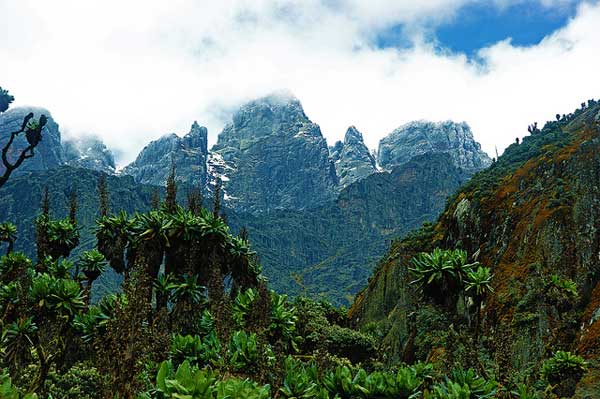
Photo by Jørn Eriksson
The Simien Mountains National Park covers the Simien Mountain Range in the North Gondar Zone in the Amhara Region. The highest point in Ethiopia, Ras Dejen at 4,550m, is located within the national park. The Simien Mountains National Park stretches over an irregular area of about 220km2, covering the Simien Mountains and sitting adjacent to five of Ethiopia's districts.
The Simien Mountains National Park was made a UNESCO World Heritage Site in 1978 and was later added to the List of World Heritage in Danger due to the decline in populations of some of its local species. The heritage area is mostly located on the western sections of the Simien Mountains.
Ethiopian Districts
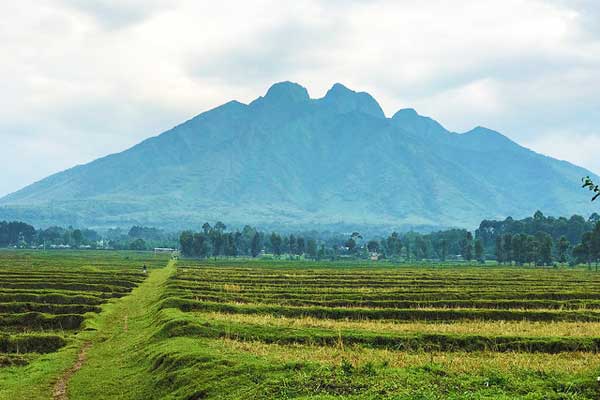
Photo by Ben Ho and John Lee
Ethiopian third-level administrative divisions are known as woreda. Five of these woreda are located on the Simien Mountains, sharing their borders with the Simien Mountains National Park. These districts are the Jan Amora, Debarq, Beyeda, Addi Arkay and Tselemt woredas.
The southern slopes of the Simien Mountains cover the northern reaches of the Jan Amora woreda, the western sections and the Lamalmo Mountains cross through the Debarq woreda, Mount Ras Dejen can be found within the Beyeda woreda, and the northern slopes cover Addi Arkay and stretch into the Tselemt woreda.
Notable Simien Mountains And Peaks
Ethiopia's terrain is divided by the Great Rift Valley and consists of high plateaus, enormous mountains and deep gorges. The average elevation of the country is 1,330 meters and reaches its highest point at 4,550 meters.
Here is some information about the most notable peaks in the Simien Mountain Range.
Ras Dejen
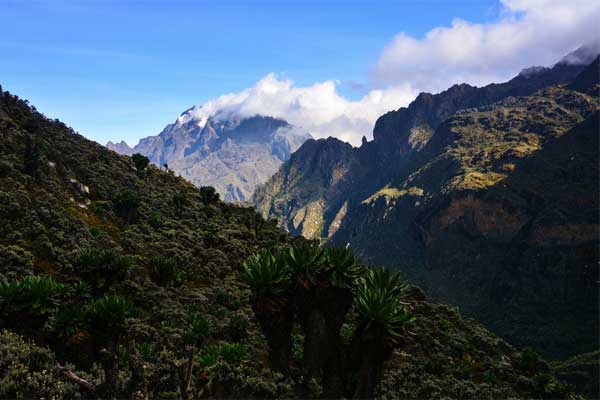
Photo by Michele D'Amico
Ras Dejen, or Ras Dashen, is the highest peak in Ethiopia and is one of the ten highest peaks in Africa at 4,550 meters above sea level. The peak lies within the Simien Mountains National Park and the Beyeda woreda.
Ras Dejen is said to be part of a volcanic rim, which has been cut down over many years by several ravines that flow into the Takkazzi River.
The first recorded summit of the peak was by two French officers, Ferret and Galiner, in 1841.
Mount Ancua
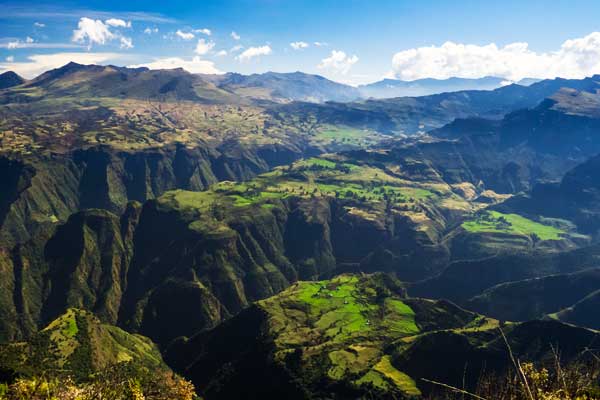
Mount Ancua, also known as Ankwa or Weynobar, is the second highest peak within the Simien Range at 4,462 meters above sea level.
Mount Kidus Yared
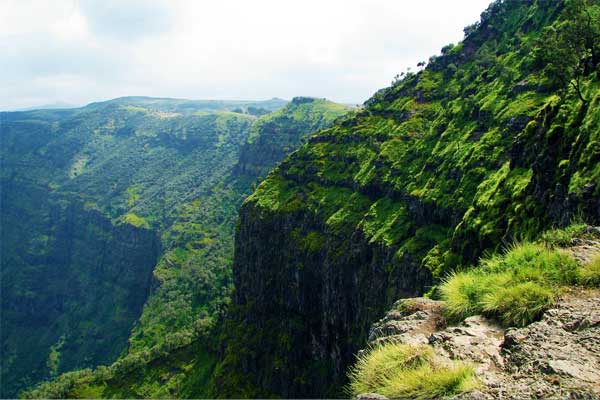
Photo by Linda De Volder
Kidus Yared sits at an elevation of 4,453 meters in the Simien Mountain Range. The mountain is home to several communities and settlements who cultivate the land. These settlements form part of the landscape of Kidis Yared and have become somewhat of an attraction for hikers.
Mount Bwahit
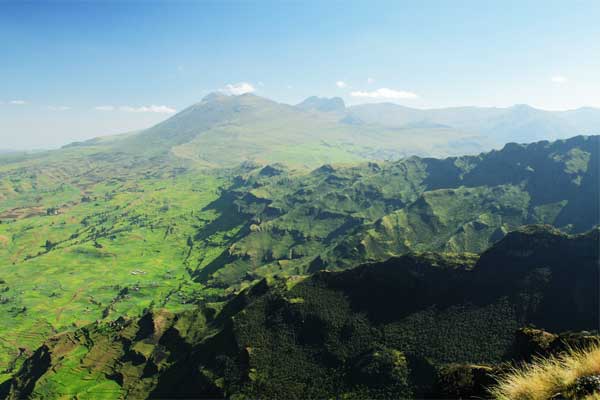
Photo by Jonathan
Mount Bwahit, also known as Mount Buahit, is the fourth highest mountain in Ethiopia with an elevation of 4,430 meters above sea level. It sits to the west of Ras Dejen and is separated from the highest peak by a gorge that is 1,600 meters deep.
Notable Hikes in the Simien Mountains
There are many trekking trails to explore throughout the Simien Mountain Range, varying from day hikes to multi-day treks. The mountains are rugged and unpredictable so make sure you come prepared.
Hiking through the Simien Mountains is an unforgettable experience that can be a worthy challenge for even the most experienced hikers. The undulating trails take you up to the highest peaks and down into the deepest gorges that make up the Simien landscape so make sure you pick a hike suitable for your level of fitness.
Here are some of the most notable hikes in the Simien Mountains.
Buyit Ras to Chenek Trek
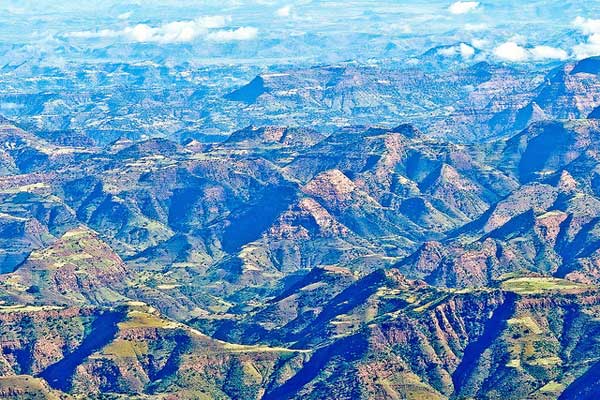
Photo by maccdc
The trek from Buyit Ras to Chenek Camp takes about 4 days and is 50-55km long. This popular Simien hike covers an incredible section of the mountains as it leads through Sankaber, Gich and ascends up Mount Bwahit.
Gelada baboons can be seen along this trail, as well as the spectacular Jinbar Waterfall. The ascent up Mount Bwahit provides the greatest opportunities for spotting the highly endangered Ethiopian wolf.
Sankeber Camp to Chenek Camp Trek
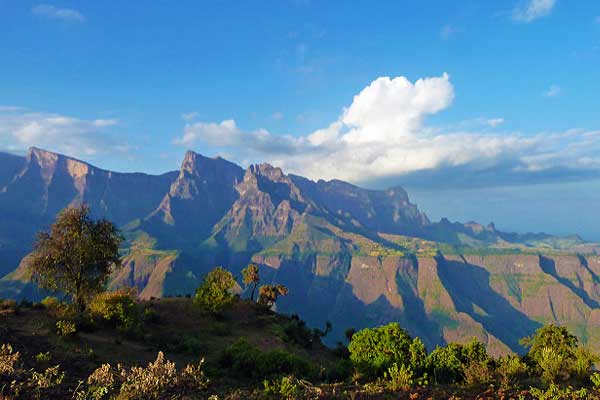
Photo by Jeff Walker
The trek from Sankeber to Chenek is another 4 day hike that showcases the dramatic landscape of the Simien Mountains. This well travelled route leads you past the Jinbar Waterfall and the Nigus Aysimush Viewpoint, which offers magnificent views over the escarpment and lowlands.
After passing through the Gich Camp, the route leads to several impressive viewpoints that offer great wildlife viewing opportunities as well as some beautiful panoramas. These include the Gidir Got Summit, the Saha Summit and the Imet Got Summit. From Gich, the trail goes on to Chenek, which takes about 6 hours when walking.
Ras Dejen Trek
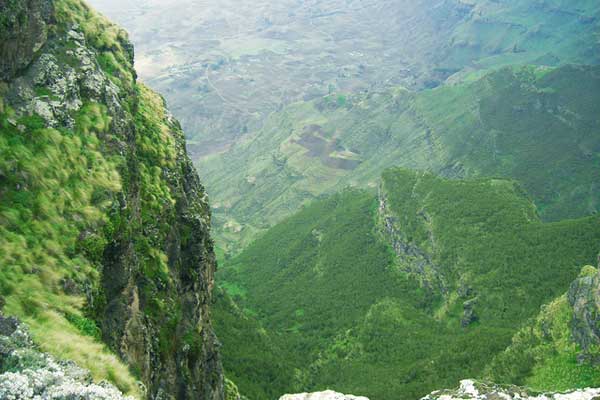
Photo by Mira Z
The ascent of Ras Dejen is a multi-day trek that generally follows the trail from Sankeber to Chenek where hikers can experience some of the most breathtaking views in the Simien Mountains. After Chenek, the hike up the highest peak in Ethiopia takes about 2 days.
This is a very challenging hike that takes you on a long climb up several false peaks before finally reaching the summit at 4,550 meters above sea level. This is the highest point in Ethiopia and an incredible feat to accomplish.
Jinbar Waterfall Hike
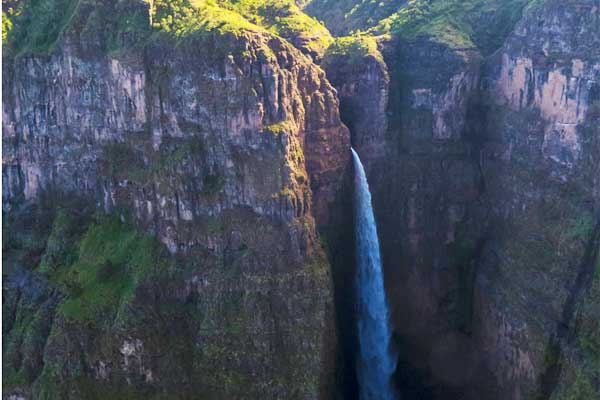
The hike to Jinbar Waterfall makes for a great day hike if you're in the vicinity. The waterfall flows down a 533 meter deep gorge and while it may dry up to a mere trickle in the dry season, the massive vertical cliff faces of the gorge are still a spectacular site to behold.
References: Britannica, Wikipedia
Continue browsing
See more information on Africa. Or check out these other African hiking articles:
